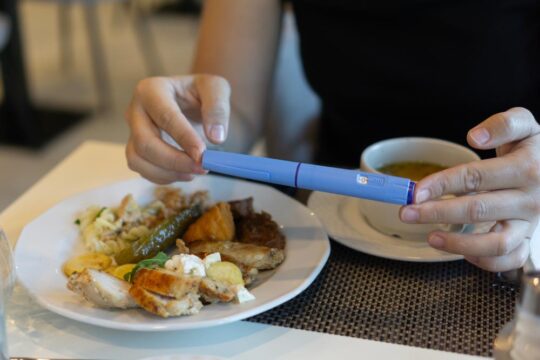Advertisment
How the syringe lubricant interacts with the drug inside it

Storage of bevacizumab injection solution in cross-linked silicone syringes was associated with less particle formation than when conventional polypropylene syringes were used, according to Dr Philip Chennell (Pharmacy Quality Control and Development Laboratory, Clermont-Ferrand University Hospital).
Dr Chennell’s study set out to compare the stability of bevacizumab injection in two different types of syringes. One type was the conventional polypropylene syringe type, lubricated with silicone oil. The other had (non-extractable) cross-linked silicone on the internal surface of the barrel of the syringe. “Our main hypothesis was that these cross-linked silicone syringes would induce less aggregation, ….. of the antibody so that therefore it wouldn’t impact its stability compared to normal silicone-oil-lubricated syringes”, explains Dr Chennell. Syringes (1 ml) containing 0.2 ml of bevacizumab, 25mg/ml were prepared and stored at 5°C and 32°C for three months. The contents were investigated at three days, one month and three months. In addition to visual examination of the contents, aggregation index measurements, size exclusion chromatography, subvisible particulate counting and dynamic light scattering analysis were also carried out. “These assays allowed us to ….. gain insight into …. the number of particles [and] their size but also how the antibody behaved – did it fragment or did it aggregate into high-molecular-weight species which hadn’t, for example, quite yet formed particles”, he says.
The main finding was that physical stability seemed to be superior with the cross-linked silicone syringes compared to the classical, normal, silicone-oil-lubricated syringes. Fewer bevacizumab particles were formed and the drug appeared to retain its initial physical characteristics. These differences were likely to be linked to the presence of the silicone oil in the polypropylene syringes, he says. “I think the main conclusion …… from a pharmaceutical point of view, is that it shows, yet again, that choosing the right primary container for monoclonal antibodies, or in fact any medication, really remains [paramount] if you want to maximize patient therapeutic safety”, he adds.
About Philip Chennell
Philip Chennell is a pharmacist, at the University Hospital of Clermont-Ferrand. He is currently in charge of the Quality Control and Development Laboratory of the hospital’s pharmacy. He is also Assistant Professor at the University Clermont Auvergne and a member of the Materials for Health Research Team, focusing on medical devices and content/container Interactions.
Read and watch the full series on our website or on YouTube.
This episode of ‘In Discussion With’ is also on Spotify. Listen to the full podcast now.






